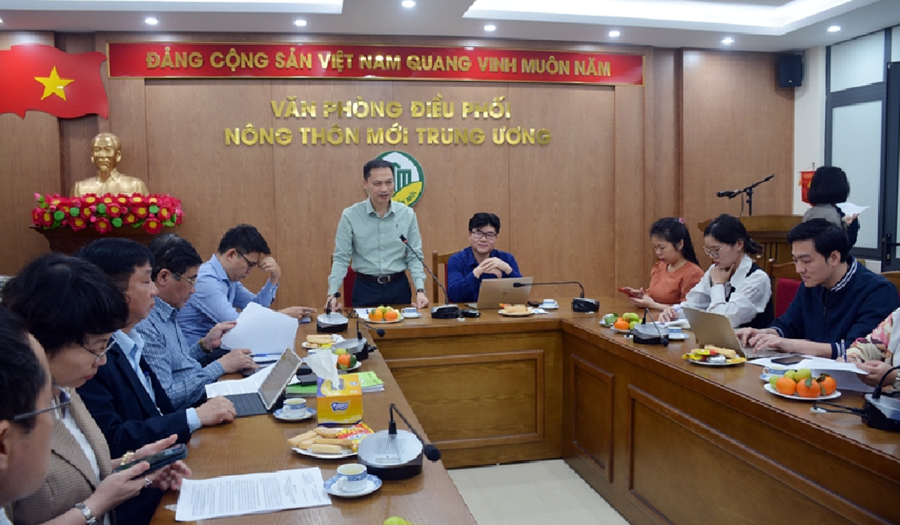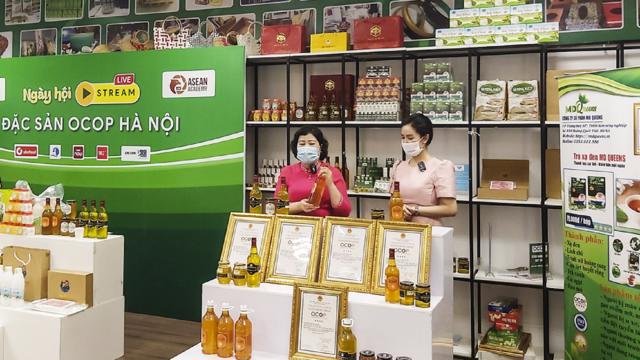[ad_1]
The set of criteria for the evaluation and classification of products for the program, one product per community (OCOP criteria), was promulgated by the Prime Minister on August 21, 2019 in Decision No. 1048/QD-TTg. 4 years of implementation has many weaknesses disclosed and limitations.
JUST DISCOVER MANY LIMITATIONS
According to the Central New Rural Coordination Office, as of December 31, 2022, across the country, 63/63 provinces and cities had a set of criteria for evaluating and classifying OCOP products. There are 8,689 OCOP products (65.5% 3-star products; 33.6% 4-star products; 0.7% potential 5-star products and 0.2% 5-star products) out of 4,479 OCOP subjects who rate 3 stars or more.
At the press conference on “Set of Criteria and Procedure for Evaluation and Classification of OCOP Products” according to the Prime Minister’s Decision No. 148/QD-TTg of February 24, 2023 by the Office of Agricultural Coordination on March 8, 2023, Mr. Dao Duc Huan spoke – Head of the program management department of One Commune, One Product, OCOP (Central New Rural Coordination Office), said during the implementation process: The set of OCOP criteria in 2019 revealed some shortcomings and limitations.

Specifically, the OCOP Product Criteria Set does not fully cover products in 6 groups according to the Prime Minister’s Decision No. 490/QD-TTg of 7 May 2018 approving the One Product per Municipality Scheme for the 2018–2020 period were not included in the subgroup and have included evaluation sheets such as: bird’s nest, products from bird’s nest, essential oil…
In addition, some criteria do not fully reflect the aspects to be considered related to the direction and approach of OCOP products, difficult to implement in the implementation process, such as the origin of the raw materials for the product source of the product …
The point structure of some criteria does not correspond to the focus and requirements of the OCOP program towards promoting internal resources, value creation and economic development of rural communities.
According to Mr. Huan, recently, the process of organizing the evaluation and classification of OCOP products has not been really strict, some places in the evaluation process are still simple in some criteria. Double assessment has not been fully applied…
On this basis, the Ministry of Agriculture and Rural Development has discussed and submitted to the Prime Minister for promulgation Resolution No. 148/QD-TTg of 24 February 2023 promulgating a set of criteria and a procedure for evaluation and analysis. supersedes Decision No. 1048/QD-TTg of 21 August 2019.
IMPROVING THE VALUE, CONFIRMING THE CHARACTERISTICS OF OCOP PRODUCTS
Speaking about new points in Decision No. 148/QD-TTg, Mr. Huan said that the new set of basic criteria keeps 26 product sets like Decision No. 1048/QD-TTg, but changes the product sets to adhere to 6 groups of OCOP products in Prime Minister’s Decision No. 919/QD-TTg of 1 August 2022.
In particular, the addition of 3 groups of products belonging to the ornamental products group, including flowers, ornamental plants and ornamental animals; Grouping products for souvenirs, furniture and decoration into a series of handicraft products; Adding a number of products not yet listed in Decision No. 1048/QD-TTg to the product group such as honey, essential oils, etc.
The new criteria set maintains the structure of the OCOP product classification and evaluation criteria set with 3 parts (product and community strength; marketability; product quality). Adjustment of the points structure between 3 parts: product and community strength 40 points; Marketing ability 25 points and product quality 35 points.
With regard to the content of the criteria, the criterion given for fresh products is the origin of the product (instead of the raw materials). The link in the production chain is regulated according to the input/input material quantity. Clarification of origin requirements, product ideas in the direction of specificity, prominence, identity and local knowledge; Requirements for packaging, product labeling…
In the new catalog of criteria, the displayed ratings for product quality have been improved, in particular the cultural values, product stories and product packaging in the catalog of criteria have been improved.
Specifically, the origin of the product idea (increase from 3 to 5 points); local wisdom/identity (from 3 to 5); Style, goods labeling (increased from 2 to 3 points). Adjust and improve the assessment results according to the role and strength of the community, e.g. B.: Use of local ingredients (increased from 3 to 5 points); production links (increased from 2 to 3 points); Employment of local workers (increased from 1 to 3 points),…
“The new set of criteria has changed to strengthen the role and value of the community; increase the value and characteristics of the product through the product story; increase the requirements for standards and regulations and reduce the criteria for assessing the sensory quality”.
Mr. Phuong Dinh Anh, Deputy Head of the Central New Rural Coordination Office.
In the new decision, some criteria have been added to improve the quality, value and use of cultural assets of OCOP products; Promoting the participation of women and ethnic minorities such as: intellectual property; product manuals; Incentive points for female subjects/ethnic minorities…
According to the process of evaluation and classification of new OCOP products, the application for evaluation and classification of OCOP products has been revised towards reduced forms, such as: B.: Registration form for products participating in the program; operational production methods …
At the same time, supplementing the “subject self-assessment report” with the aim of helping the subject to analyze, evaluate and identify the strengths and weaknesses of the product, while showing the subject’s evaluation contents according to the criteria; as a basis for the OCOP product evaluation and classification council at all levels to have a basis for reflection and evaluation.
Government decentralizes county-level people’s committee to evaluate and recognize 3-star OCOP products; Provincial People’s Committee evaluated and recognized OCOP products with 4 stars; The central government rates and recognizes OCOP products with 5 stars (National Level OCOP). At the same time, it complements the role and duties of the Council Advisory Group to assist the Council in product evaluation and classification.
Mr. Phuong Dinh Anh, deputy head of the Central Office for New Rural Coordination, said the decentralization will help to position and decentralize OCOP products more clearly, and help consumers understand the characteristics of OCOP products and better to understand. In addition, strengthen the role, responsibility and initiative of the district level in supporting product development and organizing the inspection and supervision of OCOP products. At the same time, the workload for the provincial product evaluation and classification council will be reduced.
“For stakeholders, decentralization helps improve the capacity of district and community level OCOP managers to support the issues; motivates OCOP players to develop and perfect their products after they have been evaluated. Awards, ratings and motivation to strive for product rating higher star,” stressed Mr. Phuong Dinh Anh.
[ad_2]
Source link

